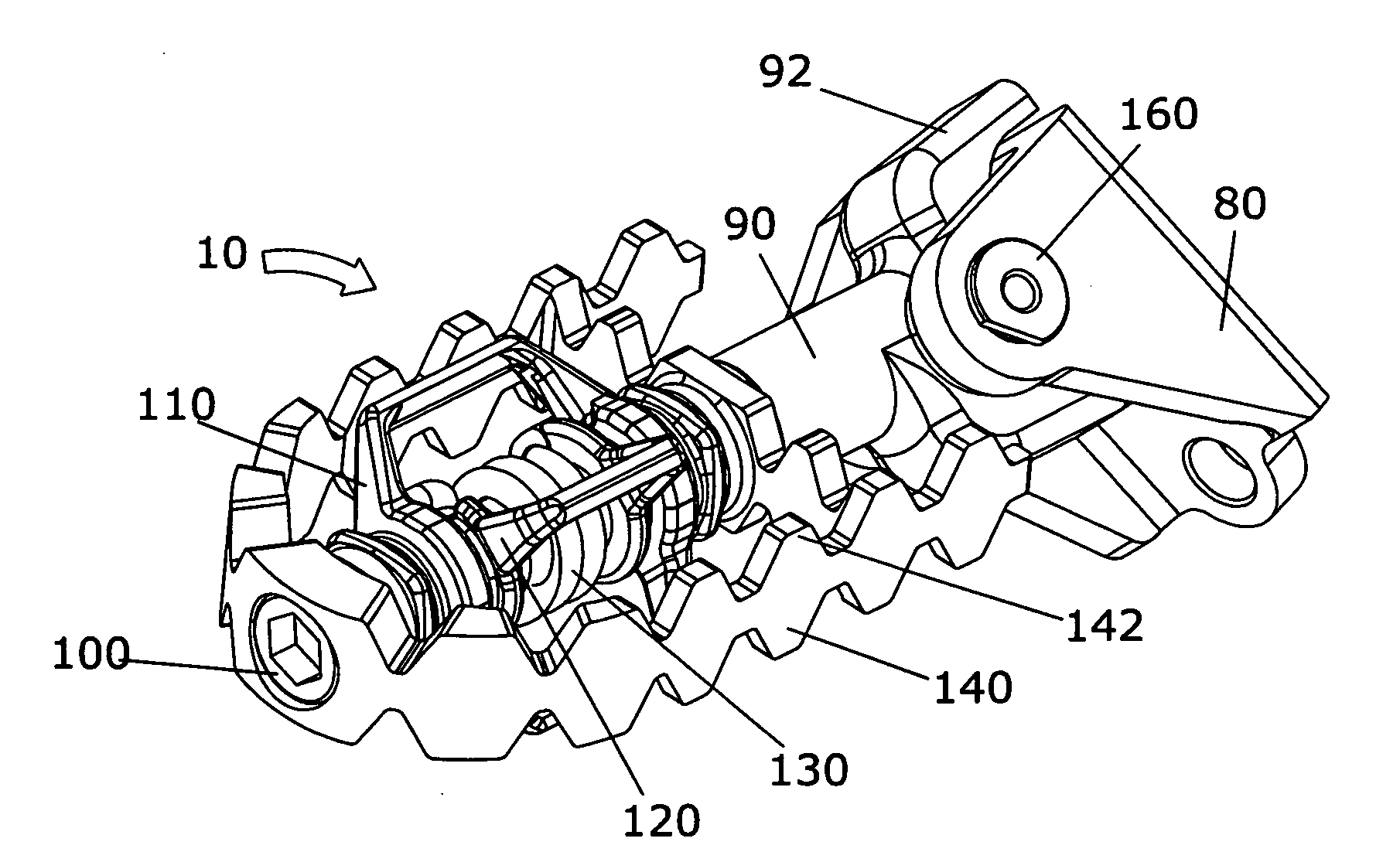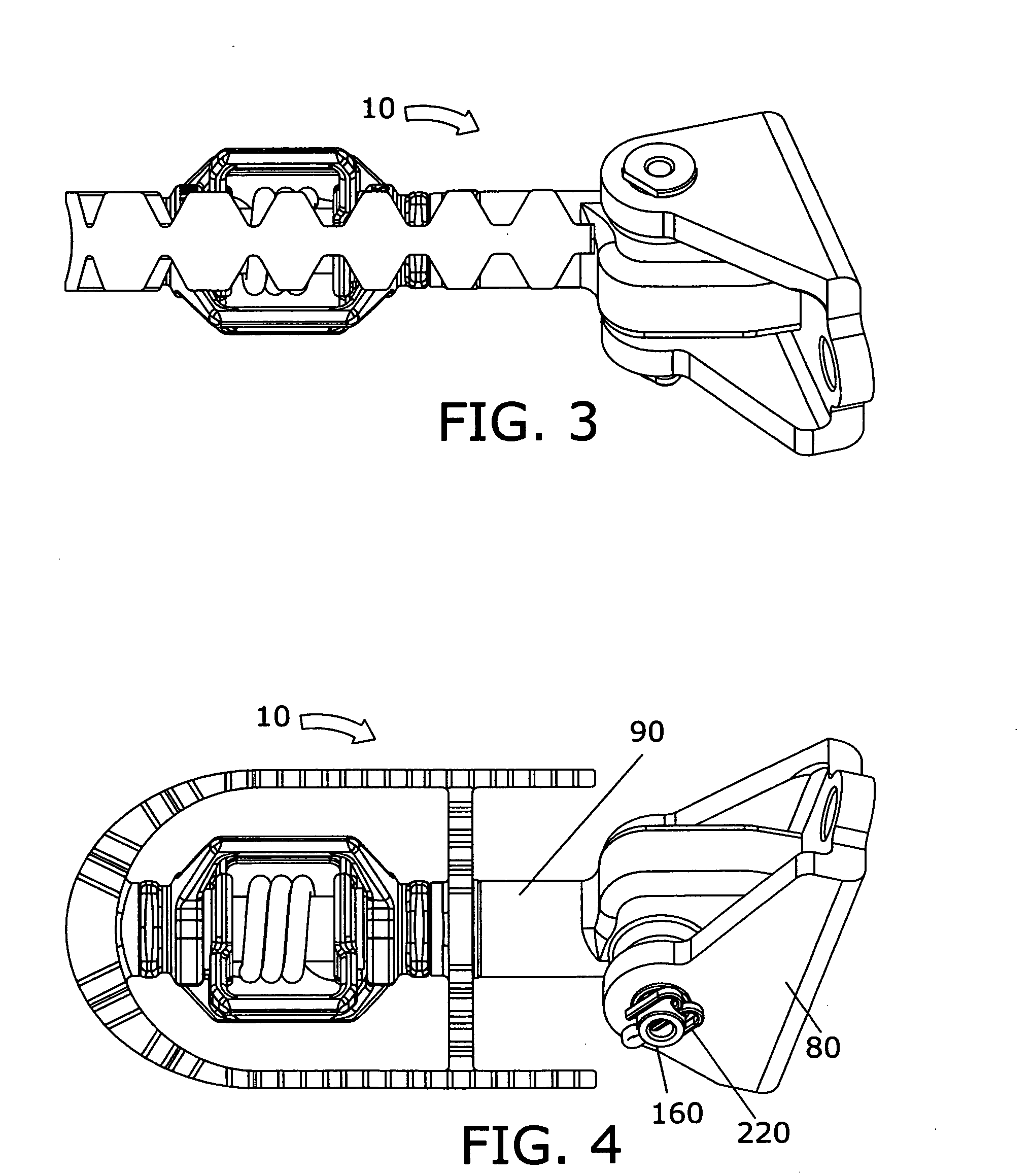Motorcycle foot peg and boot cleat assembly
a technology for motorcycles and foot pegs, which is applied in the field of motorcycle foot pegs and boot cleat assemblies, can solve the problems of riding on the back, the legs, hands, legs, and arms of the rider, and the feet of the rider not being able to prevent the pegs from pulling off, so as to achieve less body stress, less fatigue, and more control
- Summary
- Abstract
- Description
- Claims
- Application Information
AI Technical Summary
Benefits of technology
Problems solved by technology
Method used
Image
Examples
Embodiment Construction
[0041]The present invention may be understood by referring to FIGS. 1-19. By way of example, referring to FIGS. 1 to 19, it will be seen that the foregoing and other objects are attained, according to the present invention by a motorcycle foot peg 10, which is comprised of a shaft 90 connected to a bracket 80 via a pin 160, cotter pin 220, platform 140, outer latch 110, inner latch 120, spring 130, and screw 100. Platform 140 swivels on shaft 90. Spring 130 biases outer latch 110 to be held substantially perpendicular to inner latch 120, and swivels on shaft 90. When mounted to a motorcycle frame, foot peg 10 enables a motorcycle rider to fixedly engage into the foot peg via fore and aft cleats 230 and 70 on the bottom of his or her motorcycle boots 40 and 60. To release from the foot peg 10, the rider twists his or her boots 40 and 60 past a certain angle. Platform 140 pivots to expose either side of the platform and make proper contact between the bottom of the boot and the platfo...
PUM
 Login to View More
Login to View More Abstract
Description
Claims
Application Information
 Login to View More
Login to View More - R&D
- Intellectual Property
- Life Sciences
- Materials
- Tech Scout
- Unparalleled Data Quality
- Higher Quality Content
- 60% Fewer Hallucinations
Browse by: Latest US Patents, China's latest patents, Technical Efficacy Thesaurus, Application Domain, Technology Topic, Popular Technical Reports.
© 2025 PatSnap. All rights reserved.Legal|Privacy policy|Modern Slavery Act Transparency Statement|Sitemap|About US| Contact US: help@patsnap.com



